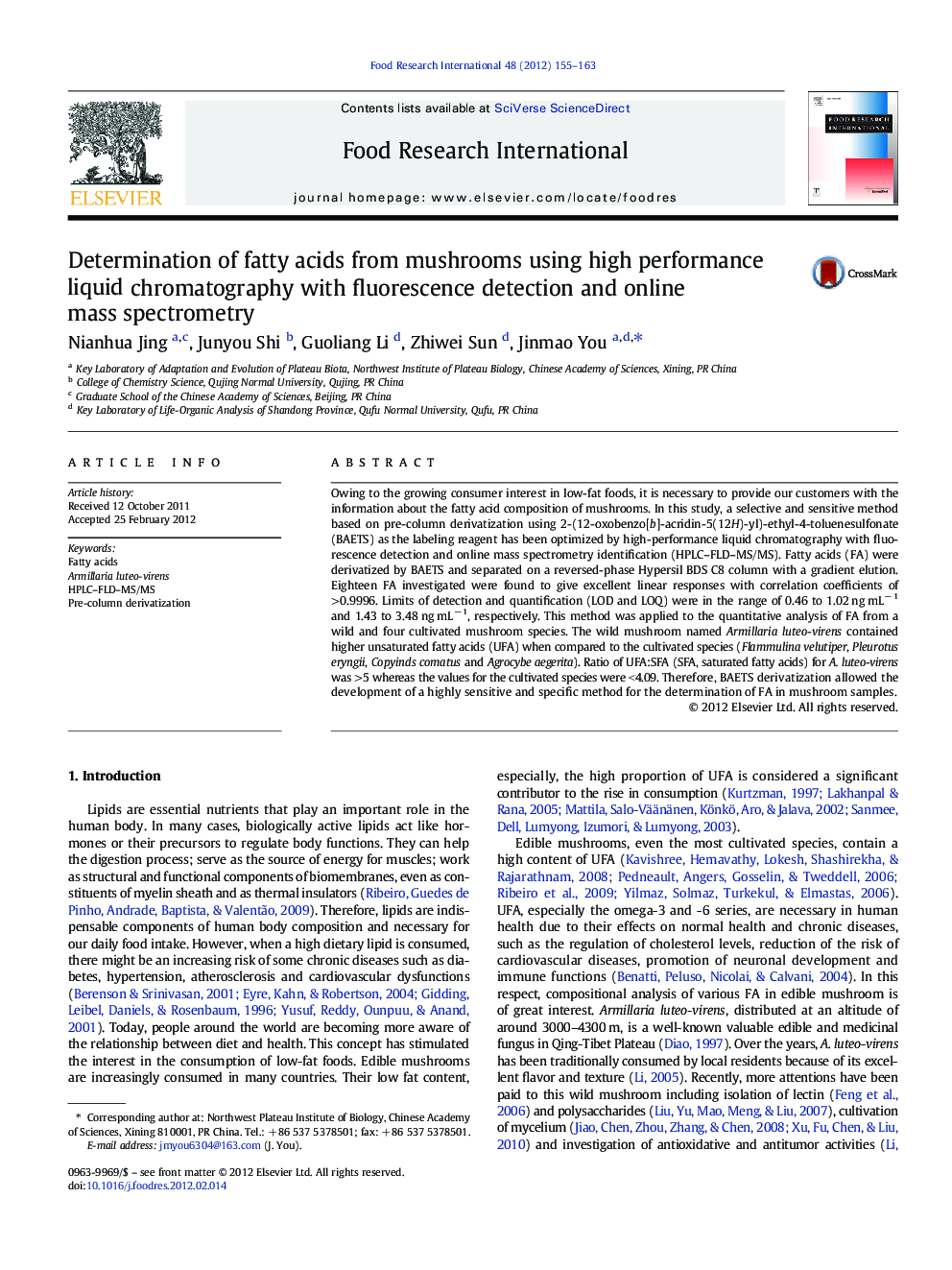| Article ID | Journal | Published Year | Pages | File Type |
|---|---|---|---|---|
| 6399259 | Food Research International | 2012 | 9 Pages |
Owing to the growing consumer interest in low-fat foods, it is necessary to provide our customers with the information about the fatty acid composition of mushrooms. In this study, a selective and sensitive method based on pre-column derivatization using 2-(12-oxobenzo[b]-acridin-5(12H)-yl)-ethyl-4-toluenesulfonate (BAETS) as the labeling reagent has been optimized by high-performance liquid chromatography with fluorescence detection and online mass spectrometry identification (HPLC-FLD-MS/MS). Fatty acids (FA) were derivatized by BAETS and separated on a reversed-phase Hypersil BDS C8 column with a gradient elution. Eighteen FA investigated were found to give excellent linear responses with correlation coefficients of >0.9996. Limits of detection and quantification (LOD and LOQ) were in the range of 0.46 to 1.02 ng mLâ 1 and 1.43 to 3.48 ng mLâ 1, respectively. This method was applied to the quantitative analysis of FA from a wild and four cultivated mushroom species. The wild mushroom named Armillaria luteo-virens contained higher unsaturated fatty acids (UFA) when compared to the cultivated species (Flammulina velutiper, Pleurotus eryngii, Copyinds comatus and Agrocybe aegerita). Ratio of UFA:SFA (SFA, saturated fatty acids) for A. luteo-virens was >5 whereas the values for the cultivated species were <4.09. Therefore, BAETS derivatization allowed the development of a highly sensitive and specific method for the determination of FA in mushroom samples.
⺠Validation of HPLC-FLD-MS/MS method to quantify fatty acids from mushrooms. ⺠A high sensitive labeling reagent BAETS was used. ⺠This method could be used to quantify similar compounds from other foodstuffs. ⺠Higher unsaturated fatty acids from Armillaria luteo-virens were observed.
